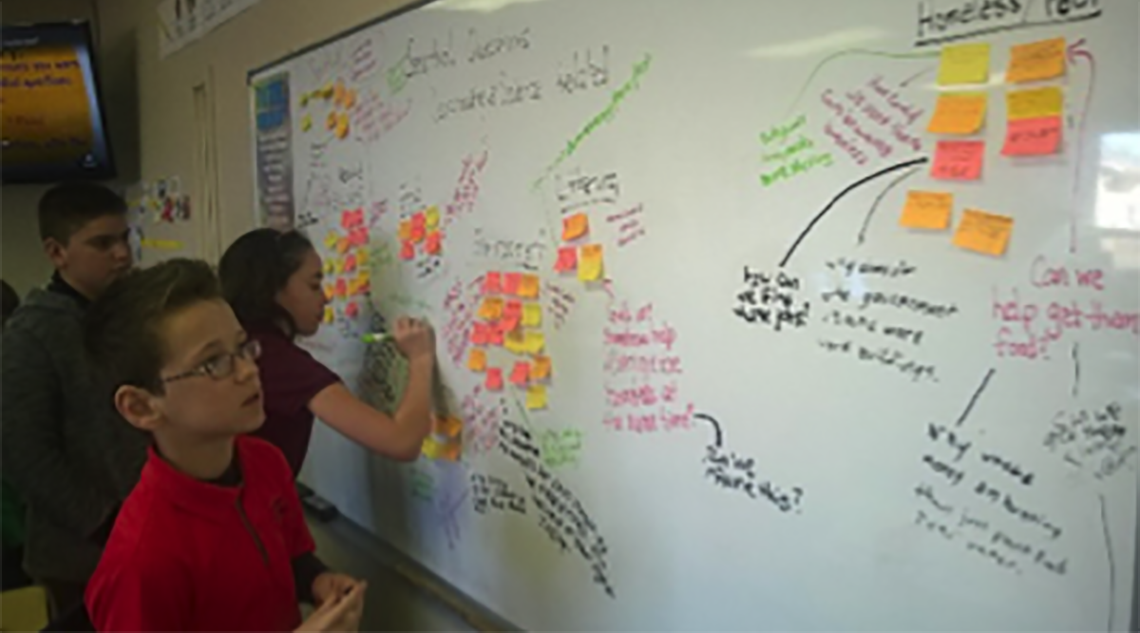As we began to dream of what 2015-16 would look like in the classrooms across the Rocky Mountain Conference, we pictured ways that we could create authentic learning experiences for our students. Our in-service in August focused on the 4 C’s of 21st Century Education—ways to create opportunities for our students to be Creative, use Critical Thinking, Collaborate, and excel in Communication.
In January our in-service focused on the next step, which is Project-based Learning. At the end of the day we want our students to take what they are learning in the classroom and apply it to their lives. By using our curriculum to create projects with purpose and meaning, our students will be prepared to become problem-solvers. No student is too young to learn how to serve, create, and share thoughts, questions, and ideas. We are passionate about not only preparing our students for the world into which they will graduate but also by giving them the foundation and skills to minister to others and to lead in our church.
Teachers have now begun to implement project-based learning in school. Michelle Velbis from Daystar Christian School in Pueblo, Colorado, shared, “This week our white board has been covered with essential questions. The only parameters I gave the students was that their questions needed a connection with science and community. My students, which range from 1st to 8th grade, have really impressed me with the depth of their questions and with the discussions and ideas that have stemmed from them. Right now, we are trying to narrow down our questions to just two or three. I can see their brains spinning and I can tell they are already excited about the possibilities.”
“I like it because we get to discuss ideas. I am excited because I’ve never done anything like this before,” said Isabella Kilfoy, 4th grade student at Daystar Christian School.
“I like the ideas and suggestions floating around. Everything is creative!” exclaimed Grant Velbis, 8th grader.
“I like that we have been planning as a team,” said Pedro Crisosto, 6th grader.
Flip Day learning project
At Laura E. Mason School in Cheyenne Wyoming, teacher Kate Kamarad shared, “Although the method of Project-based Learning is new to our classroom, they were ready to jump in. You could see their minds racing as they were saying things like, ‘We get to do the planning?’ and ‘Really? No textbooks?’”
Kamarad added, “It was refreshing to see our students not only getting involved with amazing new ideas, but being the ones that were coming up with them! Today our 8th grade students, Hunter and Delanie, become the classroom teachers. They have spent the last four weeks preparing for this Project-based Learning assignment. They read the book The Girl Who Owned a City, a book about children who have to learn how to live, after all adults are killed by a world-wide disease. Branching off the book, today we have Flip Day—all lessons and activities have been planned by them. I’m excited to see them in action!”
Flip Day teacher Hunter said, “Before Flip Day there is much to do. We have to plan everything out together, It has taken us a while to get everything planned. There are things we have to include, lesson plans for what we are teaching, rubrics for grading the authentic audience, a material list for the needed supplies, and a schedule to stay organized.” Flip Day teacher Delanie stated, “Overall, our day went very well…. Project-based learning is opening the way of learning to a whole new world, one child at a time.”
—
Diane Harris is associate education superintendent for Rocky Mountain Conference. LouAnn Howard is associate education director for Mid-America Union.








